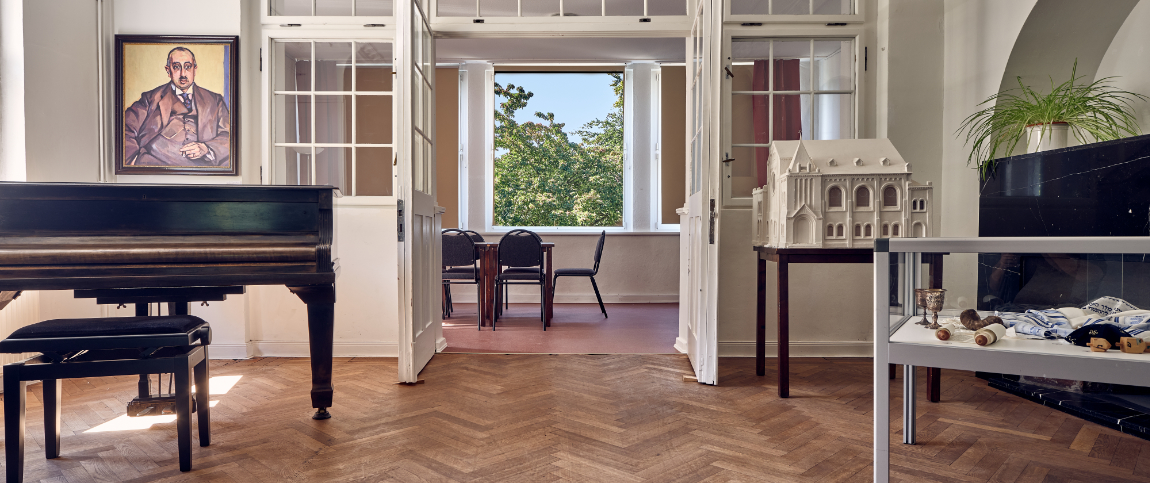The library of the Max-Samuel-Haus is currently being added book by book to the catalogue of the Rostock University Library.
It is expected to be available as a reference library from November 2020 on.
We ask for your understanding.
For questions we are at your disposal from Mondays to Fridays from 9am to 4pm
on the phone number 0381/492 32 09 and email This email address is being protected from spambots. You need JavaScript enabled to view it..
All released publications
Note: Publications can be ordered via telephone or Email.
Führer zu Orten jüdischer Geschichte in Rostock
Guide to Places of Jewish History in Rostock (only available in German)
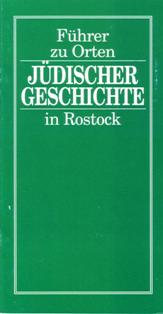
This email address is being protected from spambots. You need JavaScript enabled to view it.
This guide to Jewish sites in Rostock – in the form of a brochure – is intended to encourage you towards a path through the city of Rostock to the well-known, but certainly also to the little-known points of Jewish interest.
The book names and explains buildings and locations which are connected to Jewish life of Rostock then and now. Hardly any sites – such as the Old Jewish Cemetery or the commemoration stele of the destroyed synagogue – of this important part of Rostock’s history go without mention.
Authors and bibliographical data:
Kristine Schlaefer and Frank Schröder, Führer zu Orten jüdischer Geschichte in Rostock, Stiftung Begegnungsstätte für Jüdische Geschichte und Kultur in Rostock (ed.), Rostock: Redieck & Schade, 2002, (=Schriften aus dem Max-Samuel-Haus; vol. 0). No ISBN.
* 32 pages with 21 black-and-white illustrations
honorary fee 3€
SinnLEHRE gegen SinnLEERE
Sensible Teaching against Senselessness (only available in German)
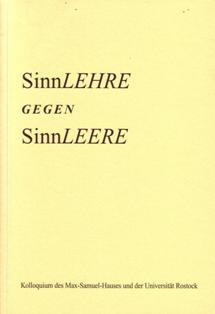
This email address is being protected from spambots. You need JavaScript enabled to view it.
From the 3rd to the 5th of May 1999 the Max-Samuel-Haus organised an international colloquium in collaboration with the University of Rostock about Viktor E. Frankl’s logotherapy. This book contains various contributions of renowned academic to the topic.
Authors and bibliographical data:
Dirk Drewelow, Ilona Lieber, Heinz Gall, Jaro Křivohlavý, Otto Zsok, and Yaʿaqov Zur, Sinnlehre gegen Sinnleere: Impulse zur positiven Wertevermittlung aus der Logotherapie des jüdischen Psychiaters Viktor E. Frankl: Kolloquium des Max-Samuel-Hauses und der Universität Rostock anlässlich des 75. Geburtstages von Dr. Dr. h.c. Yaakov Zur ... 3. bis 5. Mai 1999 in der Aula der Universität und im Max-Samuel-Haus, Dirk Drewelow and Christine Gundlach (eds.) on behalf of the Stiftung Begegnungsstätte für jüdische Geschichte und Kultur, Rostock: Max-Samuel-Haus, 2000, (=Schriften aus dem Max-Samuel-Haus; vol. 1). No ISBN.
* 96 pages
honorary fee 3€
Ein bißchen anders bleibt man immer
One always stays a bit different (only available in German)
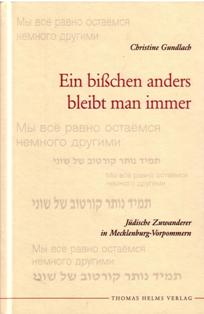
This email address is being protected from spambots. You need JavaScript enabled to view it.
What compelled a singer from Saint Petersburg, an engineer from Baku, a programmer from Kiev, a doctor from Poltava, a precision mechanic from Riga, and a scientist from Moscow to move to Rostock, Schwerin, or Wismar with their families?
More than 1,000 Jews came to Mecklenburg from the states of the former Soviet Union. 36 of these immigrants, who were admitted within the framework of a German Federal special quota regulation (Germ. Kontingentflüchtlinge), report about hope and their lives between family and foreign parts, tradition and present.
Author and bibliographical data:
Christine Gundlach, Ein bißchen anders bleibt man immer: jüdische Zuwanderer in Mecklenburg-Vorpommern, Schwerin in Mecklenburg: Helms, 2000, (=Schriften aus dem Max-Samuel-Haus; vol. 2). ISBN 3-931185-75-3
* 207 pages
honorary fee 8€
100 jüdische Persönlichkeiten
100 Jewish People from Mecklenburg-Vorpommern (only available in German)
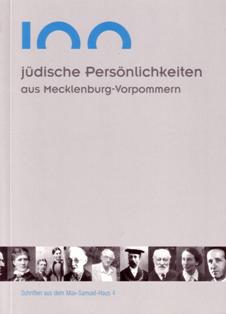
This email address is being protected from spambots. You need JavaScript enabled to view it.
As rabbis, community representatives, artists, politicians, businesspeople, jurists, doctors, scientists, inventors, and teachers, these people helped shape not only the development of Hither Pomerania and Mecklenburg, but also those of their paramount entities such as the Holy Roman Empire, the German Empire, and the Weimar Republic.
Among those portrayed are people who can today be found in every lexicon, such as the car inventor Siegfried Marcus (Malchin; 1831–1898) or the internist Oscar Minkowski (Greifswald; 1858–1931), but also people of local history, such as the fire chief David Davidsohn (Demmin; 1850–1926) or the gynecologist and obstetrician Hedwig von Goetzen (Rostock; 1893–1976).
Two hundred years are between the births of the oldest, the medalist Jacob Abraham (1723–1800), and the most recent, the historian Yaʿaqov Zur (1924–2013). These were two hundred years which were of decisive importance for Jewish Germans: in the early 18th century they were a discriminated group of low rank, however in an overall environment where inequality was the standard with various other groups such as illegal aliens, nomadic diddycoys, outcast travelling performers, serfs, free peasants, free city-dweller, legal aliens, privileged aristocrats and legally exempt members of the regnal houses, to mention only a few.
With the revolutions in the USA (1776) and France (1789), legal equality became standard and exclusion from it a scandalon. Jews in Prussian Pomerania (unlike in Swedish Pomerania) and in Mecklenburg-Schwerin were emancipated as citizens in 1812 and 1813, respectively. However, in 1817 Mecklenburg-Schwerin's Jews were disenfranchised of their citizenship again. So, struggle for Jewish emancipation remained the task in Mecklenburg, finally reachieved through North German federal law in 1868, whereas overcoming extralegal discrimination within society and last restrictions as to officialdom were issues in Pomerania and Mecklenburg alike. In 1919 these last restrictions fell. Jews experienced the second half of the 19th and the first third of the 20th century as confident German citizens of Jewish faith. However, with the Nazis in power and their willful helpers as of 1933 they smashed all this to smithers.
Author and bibliographical data:
Frank Schröder, 100 jüdische Persönlichkeiten aus Mecklenburg-Vorpommern, Stiftung Begegnungsstätte für jüdische Geschichte und Kultur in Rostock (ed.), Rostock: Stadtdruckerei Weidner, 2003, (=Schriften aus dem Max-Samuel-Haus; vol. 4). No ISBN.
* 174 pages
honorary fee 8€
Die Welt ist eine schmale Brücke.
Yaakov Zur – ein Israeli aus Rostock.
The World is a Narrow Bridge
Yaakov Zur – an Israeli from Rostock (only available in German)
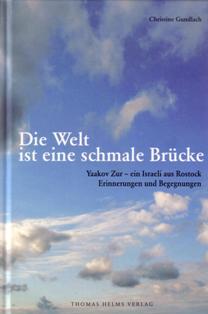
This email address is being protected from spambots. You need JavaScript enabled to view it.
Alfred Jacques Zuckermann, born in Rostock in 1924, emigrated to Palestine in 1939 like both of his brothers. His father could emigrate to England, but his mother Perle and sister Ruth remained in Germany and were deported to Auschwitz and killed in a gas chamber. About a half century later Zuckermann, now the Israeli Dr. Yaʿaqov Zur (1924–2013), returned to the city of his birth (which bestowed him honorary citizenship in 1993).
Childhood in the Jewish community of Rostock, schooling in Frankfurt am Main, life in the religious kibbuz Ein haNetziv, a lectureship in South America, study in Jerusalem, work as a teacher and university lecturer at the Bar-Ilan University, family, religion, science, and politics: memories of Yaʿaqov Zur, portrayals of family members and companions, interviews, documents, and photographs communicate a Jewish view of life and a view into German-Jewish history of the 20th century.
Authors and bibliographical data:
Yaʿaqov Zur, Die Welt ist eine schmale Brücke: Yaakov Zur – ein Israeli aus Rostock; Erinnerungen und Begegnungen, Christine Gundlach (ed.), Schwerin in Mecklenburg: Helms, 2003, (=Schriften aus dem Max-Samuel-Haus; vol. 3). ISBN 3-935749-20-1.
* 256 pages
honorary fee 8€
Die dunklen Jahre von Schwarzenpfost
The dark Years of Schwarzenpfost
Gelbensande Students research German History (only available in German)
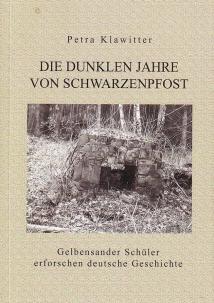
This email address is being protected from spambots. You need JavaScript enabled to view it.
Travelling along the federal route B 105 between Rostock and Ribnitz, one could easily miss the inconspicuous arrow which points to a neighbouring narrow forest path. A path leads into the thick mixed forest almost every hundred metres near Gelbensande. One of these, its sign reading Schwarzenpfost, does not only give hikers pleasant views of the Rostock Heath; it leads to one of the darkest chapters of German history. In a small clearing are the remains of Schwarzenpfost, a subcamp of the Ravensbrück concentration camp.
More than 50 youths from Gelbensande have learned a lot in the past years while they were researching regional history. The results of their work have been materialised in a book edited by Petra Klawitter, in which reports of the atrocities of guards and the fates of forced labourers are given. However, it also contains the pride of students and teachers from having created a new awareness among people from the area as well as decisionmakers from business and politics.
Authors and bibliographical data:
Petra Klawitter, Die dunklen Jahre von Schwarzenpfost: Gelbensander Schüler erforschen deutsche Geschichte, Stiftung Begegnungsstätte für jüdische Geschichte und Kultur in Rostock (ed.), Rostock: BS-Verlag, 2006, (=Schriften aus dem Max-Samuel-Haus; vol. 6). ISBN 978-3-89954-214-1.
* 129 pages.
Bruno Gimpel – Monographie
Bruno Gimpel – Rostock - Ahrenshoop - Dresden (only available in German)
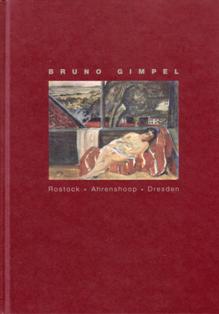
This email address is being protected from spambots. You need JavaScript enabled to view it.
Bruno Gimpel (1886–1943), who was born in Rostock, was highly regarded as a poster designer and graphic artist in his chosen home of Dresden. As a co-founder of the ‹Vereinigung Rostocker Künstler› (Union of Rostock Artists), he regularly participated in exhibitions in the city of his birth until 1933. He also concurrently spent the summer months of every year until 1935 in Hither Pomerian Ahrenshoop. In these productive years an extensive corpus of works was developed: expressionist paintings, still lifes, landscape watercolours, and paintings of structures. As a Jew, Gimpel received an professional ban (Berufsverbot). Facing the threat of deportation, he chose to kill himself in 1943.
Klaus Tiedemann, a Rostock art expert, reconstructed Bruno Gimpel’s entire body of works in a research project which lasted several years. His monograph is the first extensive publication about this painter. It contains 76 primarily colour illustrations, details of the biography, and a temporary catalog of works.
Author and bibliographical data:
Klaus Tiedemann, Bruno Gimpel: Rostock, Ahrenshoop, Dresden; Malerei, Grafik, Plakat; [accompanies the exhibitions ‹Bruno Gimpel – Rostock, Ahrenshoop, Dresden – Malerei, Grafik, Plakat› im Max-Samuel-Haus Rostock, [...] from 3 September to 29 October 2006 and in the Kunstkaten Ahrenshoop, [...] from 13 Mai to 10 Juli 2007], Frank Schröder (ed.) on behalf of the Stiftung Begegnungsstätte für Jüdische Geschichte und Kultur in Rostock, Berlin: MCM-Art-Verlag, 2006, (=Schriften aus dem Max-Samuel-Haus; vol. 7). ISBN 978-3-9809969-6-9.
* 79 pages
honorary fee 22.50€
Kate Diehn-Bitt – Joseph-Zyklus
Kate Diehn-Bitt – The Joseph Cycle and other Works of Jewish History and Mythology (only available in German)

This email address is being protected from spambots. You need JavaScript enabled to view it.
The Rostock painter Kate Diehn-Bitt (1900–1978) was inspired by the Joseph novels of Thomas Mann (1875–1955) to create a painting cycle from 1951 to 1956. In addition to that, works of Jewish history and mythology formed an important part of her corpus of works over several decades. In this book the art scholar Dr. Katrin Arrieta investigated the position of this complex of works in Kate Diehn-Bitt’s corpus of works and biography.
Author and bibliographical data:
Katrin Arrieta, Kate Diehn-Bitt: der Joseph-Zyklus und andere Arbeiten zur jüdischen Geschichte und Mythologie, Max-Samuel-Haus (ed.), Rostock: Max-Samuel-Haus, 2007, (=Schriften aus dem Max-Samuel-Haus; vol. 8). No ISBN.
* 48 pages with 36 colour illustrations
honorary fee 9€
Kate Diehn-Bitt – Tagebuch
Kate Diehn-Bitt – Journal (only available in German)
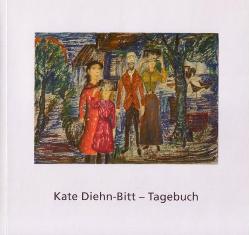
This email address is being protected from spambots. You need JavaScript enabled to view it.
The 30 watercolour drawings of Kate Diehn-Bitt (1900–1978), the ‹journal› of her youth, appeared in 1958. This was a time when the artist had withdrawn from public functions, commissions, and exhibitions as a protest against the programme of early East Germany formulated in the so-called ‹formalism debate› to delineate the art under communist rule from the ‹western decadent art scene›.
As she reflected on her thematic and creative potential, she took a radical and lonely position. Biographical topics played an important part: firstly those of her fundamental familiar surroundings, the characterisation of which, through her Jewish stepfather Leo Glaser (1876–1950), had highly influenced her self-understanding, especially during the time of the Nazis.
The ‹journal› allows this environment to become alive in many ways via graphical recordings of memories of moments of everyday life. Bright colours, a subtle style which extends from the finest to the heftiest strokes, precision in details, and a lightly humorous exaggeration of the depicted topics give the pages a unique radiance.
Author and bibliographical data:
Katrin Arrieta, Kate Diehn-Bitt: Tagebuch; Kindheit und Jugend 1904–1920, Max-Samuel-Haus (ed.), Rostock: Max-Samuel-Haus, 2009, (=Schriften aus dem Max-Samuel-Haus; vol. 10). No ISBN.
* 40 pages with many illustrations
honorary fee 9€
Die biblische Josefsgeschichte
The Biblical Story of Joseph
A Retelling with Comments from Fred Mahlburg (only available in German)
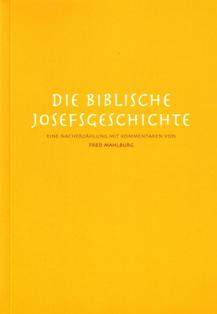
This email address is being protected from spambots. You need JavaScript enabled to view it.
The theologian Dr. Fred Mahlburg, longstanding leader of the ‹Protestant Academy of Mecklenburg-Vorpommern› (Evangelische Akademie Mecklenburg-Vorpommern), approaches the biblical story of Joseph from his own perspective. This occurred in loose correlation with the intention of the Max-Samuel-Haus to exhibit works of the painter Kate Diehn-Bitt (1900–1978), among these a cycle about the story of Joseph.
Author and bibliographical data:
Fred Mahlburg, Die biblische Josefsgeschichte: eine Nacherzählung mit Kommentaren, Rostock: Max-Samuel-Haus, 2007, (=Schriften aus dem Max-Samuel-Haus; vol. 9). No ISBN.
* 91 pages
honorary fee 5€
Richard Siegmann. ... aber wir waren Deutsche
Richard Siegmann … but we were Germans (only available in German)
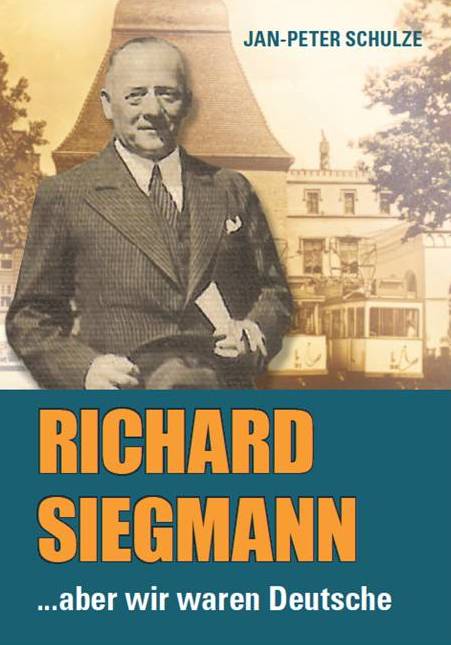
This email address is being protected from spambots. You need JavaScript enabled to view it.
The hints of Richard Siegmann (1872–1943) in Rostock are varied. In front of the city hall a ‹stumbling block› (Gedenkstein) was placed in his memory. A street in the district of Reutershagen is named after him, and a foundation bears his name.
An entrepreneur with foresight, first sponsor of Mecklenburg tourism, citizen with public spirit: all of this was Richard Siegmann, who lived in Rostock from 1898 to 1935. For the first time, data, facts, and background of his life, a life which fell almost entirely into obscurity after 1945, are coherently portrayed. The great significance of the tram director for Rostock and Mecklenburg forcefully reveals itself to the reader.
What led to the electrification of Rostock’s trams beginning in 1904 and the integration of the busses into the mass transit system during the 1920s (which reached its zenith with a strategic expansion of the network) was initiated by him.
The particular attention of this politically engaged liberal affected the creation and expansion of a professional commercialisation of tourism in Mecklenburg. Siegmann consequentially was one of the founding members of Rostock’s tourist office (Rostocker Verkehrsverein) in January of 1910 and of the Mecklenburg transport association (Mecklenburgischer Verkehrsverband) in May of 1911, of which he was the chairman for several years.
Following the separation of state and religion in 1919 he actively reformed the statutes of the ‹Board of Mecklenburg-Schwerin Jews›, transforming it from a body of compulsory membership for all Jews in the pre-1918 Mecklenburg-Schwerin into a statewide umbrella body of Jewish congregations of voluntary membership. The deputies of the ‹Israelite regional assembly› elected him their speaker in 1926, and again, until he resigned in 1936.
As a Jew he was fired as managing director of the ‹Rostocker Straßenbahn AG›, and returned to Berlin, the city of his birth. For his entire life, Richard Siegmann had seen himself as German and therefore after 1933 could not decide to save himself via emigration from what he saw as his home country. He starved to death in the concentration camp Theresienstadt in October of 1943. The Nazis killed almost his entire family, including his wife and one of his three children.
Author and bibliographical data:
Jan-Peter Schulze, Richard Siegmann: ...aber wir waren Deutsche, Max-Samuel-Haus (ed.), Rostock: Redieck & Schade, 2011, (=Schriften aus dem Max-Samuel-Haus; vol. 11). ISBN 978-3-942673-08-2.
* 219 pages
honorary fee 8€
SOLD OUT
Die Familie Josephy
The Josephy Family (only available in German)
This email address is being protected from spambots. You need JavaScript enabled to view it.
Historically descriptive and demonstrated with impressive documents and archive materials, this publication of the Max-Samuel-Haus documents the life and various activities of the Jewish German Josephy family across a timespan of 11 generations which began in the Mecklenburg town of Schwaan.
At the beginning of the 18th century the Josephys did not enjoy the rights as ducal subjects. Their existence in a feudal society remained dependent on the favour of their lord, here the Duke of Mecklenburg-Schwerin. As ‹protected Jews›‹ (Schutzjuden), they labouriously established the basis of their livelihood. A century later they experienced in Mecklenburg-Schwerin a short period of Jewish emancipation (1813–1817). Its repeal did not break their will for self-determination and demand for equal rights. As merchants, the Josephys claimed their place in the society of their small city. In their synagogue they struggled with religious orientation. Only in 1868 the North German Confederation established equal rights in Mecklenburg-Schwerin through federal law. The Josephys utilised this chance for an economic upswing and opened new areas of business.
Beginning in 1933 the Josephys were persecuted in Germany and lost their opportunities for education and work. The young family members emigrated first. The family’s men were arrested during the Kristallnacht in November of 1938. After that, the older members also tried to flee Germany. Seven family members were victims of the Shoah. The emigrants found new homes and spread themselves across three continents. At the beginning of the 21st century, the youngest members of the Josephy family were being raised in Canada, Israel, Switzerland, the United Kingdom, and the United States. Currently no family members live in Germany.
Authors and bibliographical data:
Steffi Katschke und Frank Schröder, Die Familie Josephy: Lebenswege einer deutsch-jüdischen Familie aus Schwaan 1714–2012, Begegnungsstätte für jüdische Geschichte und Kultur in Rostock (ed.), Rostock: Stiftung Begegnungsstätte für jüdische Geschichte und Kultur in Rostock, 2012, (=Schriften aus dem Max-Samuel-Haus; vol. 12). ISBN 978-3-00-038618-3.
* 216 pages
Note: This book is sold out. A reprinting is currently not planned. The book can only be found in the library of the Max-Samuel-Haus.
Die Synagoge und ihre Rabbiner
The Synagogue and its Rabbis. Rostock 1902–1938 (printed in German and English)
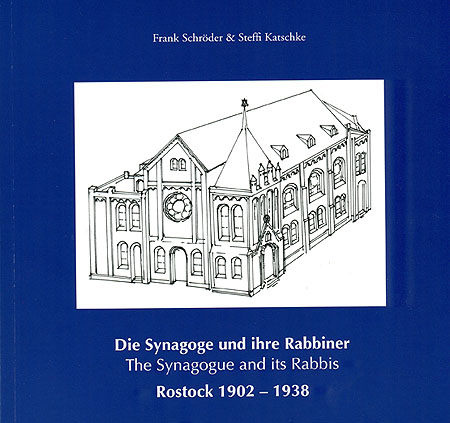
This email address is being protected from spambots. You need JavaScript enabled to view it.
This brochure – printed in German and English – deals with the fitful history of Rostock’s former synagogue and its rabbis.
On 14 September 1902 the Mecklenburg-Schwerin's chief rabbi Dr. Fabian Gabriel Feilchenfeld (1827–1910) inaugurated the synagogue built at Augustenstraße 101. Designed by the architect professor Ludwig Levy (1854–1907), this structure reflected the increasing confidence of Rostock’s Jewish community. With 350 seats the synagogue was the largest in the Grand Duchy of Mecklenburg-Schwerin.
Via religious services, celebrations and activities it became the center of Jewish life. With the persecution of Jews during the Nazi period the synagogue became a place of refuge for an ever-dwindling community. This last point of self-determination ended with the Kristallnacht, when it was burned and its ruins sold. The ruins were destroyed, as was the pertaining front building, thus far undamaged and then still inhabited by the Levys from Tessin as the site was struck in a British air-raid by a bomb on 11 April 1944.
Authors and bibliographical data:
Steffi Katschke und Frank Schröder, Die Synagoge und ihre Rabbiner: Rostock 1902–1938 / The synagogue and its rabbis, Oliver Hoffmann (translator), Stiftung Begegnungsstätte für jüdische Geschichte und Kultur in Rostock (ed.), Rostock: Max-Samuel-Haus, 2013, (Schriften aus dem Max-Samuel-Haus; vol. 13). ISBN 978-3-00-044025-0.
* 40 pages with 12 black-and-white illustrations
honorary fee 6€
Nimm mich mit
Take me with you! A children’s book (only available in German)
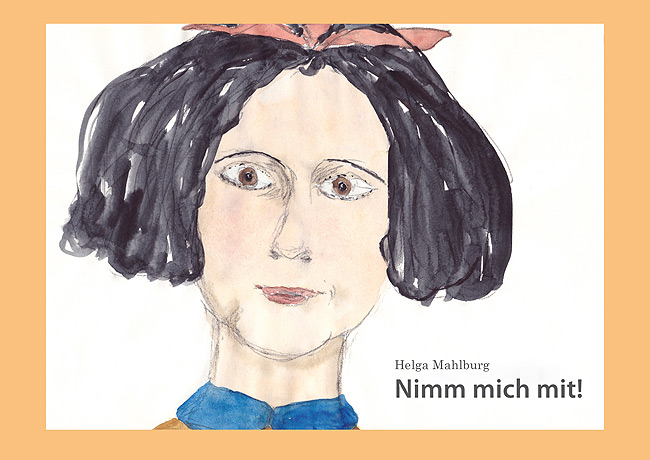
This email address is being protected from spambots. You need JavaScript enabled to view it.
The author Helga Mahlburg traced the life stories of Alfred Jacques Zuckermann (later Yaʿaqov Zur; 1924–2013) and Ruth Zuckermann (1931–1942). With many watercolour illustrations this book explains in a child-friendly manner how life for Jewish children was during the Nazi period.
This book is inspired in text and design by Yaʿaqov Zur's book ‹Die Welt ist eine Schmale Brücke› (The World is a Narrow Bridge). The Rostock-born German philologist Dr. Christine Gundlach had many conversations with Zur, which she recorded for this book. Thus a book of Zur’s memories has been created via these numerous audio recordings and written sketches.
For this children’s book some connections had to be abbreviated, but the accuracy of the content was maintained. This children’s book is suitable for children of 6 years and older.
Authors and bibliographical data:
Helga Mahlburg, Nimm mich mit!, Stiftung Begegnungsstätte für jüdische Geschichte und Kultur in Rostock (ed.), Rostock: Max-Samuel-Haus, 2014, (=Schriften aus dem Max-Samuel-Haus; vol. 14). No ISBN.
* 70 pages with watercolor illustrations
honorary fee 9.90€
Blätter aus dem Max-Samuel-Haus

"Blätter aus dem Max-Samuel-Haus" was a magazine published internally at irregular intervals between 1992 and 2006, interrupted by four special issues (marked with *). Among other things, it dealt with current events, news about the Stolper-/Denksteine or from the Jewish Community Rostock. In addition, there were often book tips and reviews as well as travel reports and articles about guests of the house or other personalities. Here, interested parties can view and download the issues of the "Blätter aus dem Max-Samuel-Haus". This gives them valuable insights into the history of the foundation.
20 viewsof Synagogues in Mecklenburg
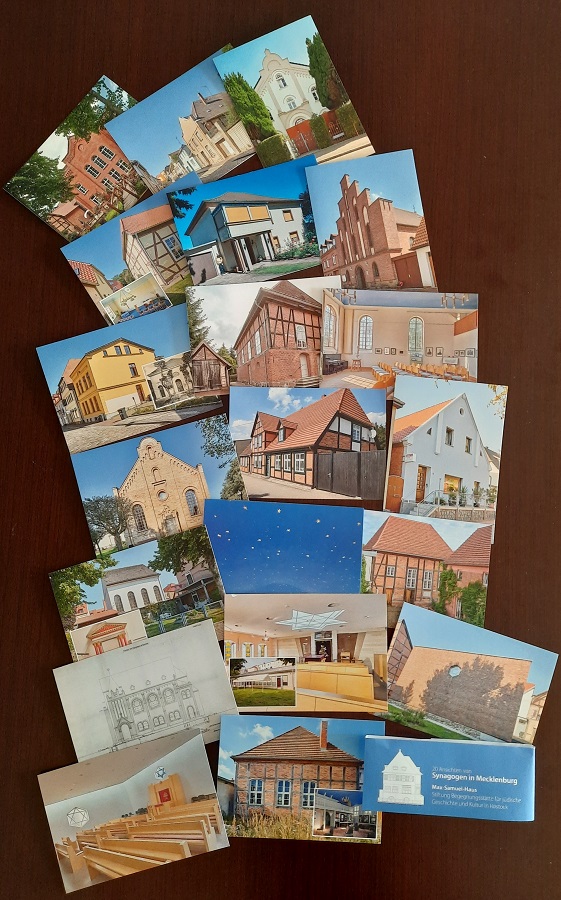
This email address is being protected from spambots. You need JavaScript enabled to view it.
The postcards show former synagogue buildings and interior photos of
Boizenburg
Bützow
Crivitz
Dargun
Demmin (die einzige Vorpommersche)
Goldberg
Güstrow
Hagenow
Krakow am See
Ludwigslust
Neubukow
Plau am See
Röbel
Rostock (zerstört, Bauzeichnung)
Rostocker Gemeindezentrum mit Synagoge
Schwerin
Stavenhagen
The photos were taken by photographer and journalist Sven Tetzlaff, printed by PINAX.
* Only available in pack of 20
honorary fee 5 €



